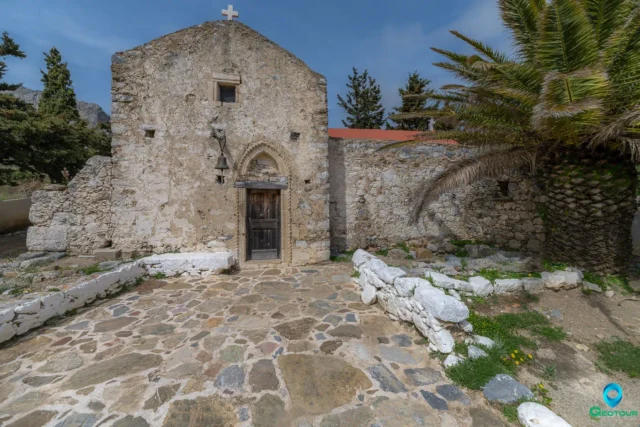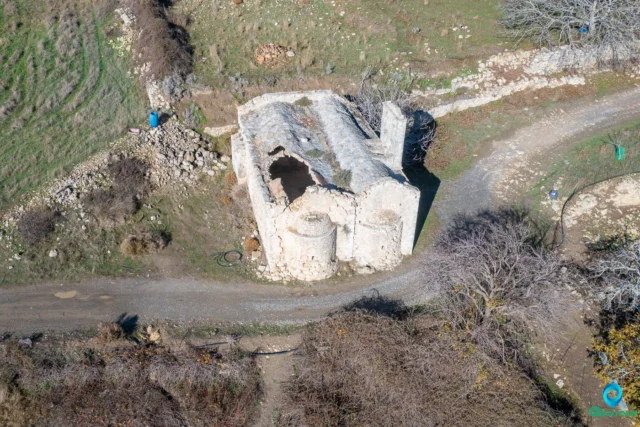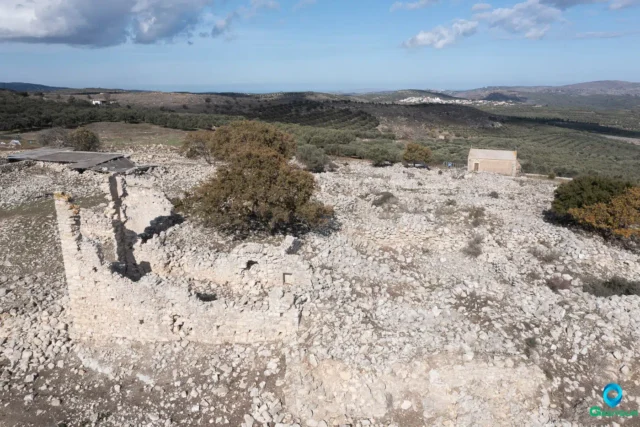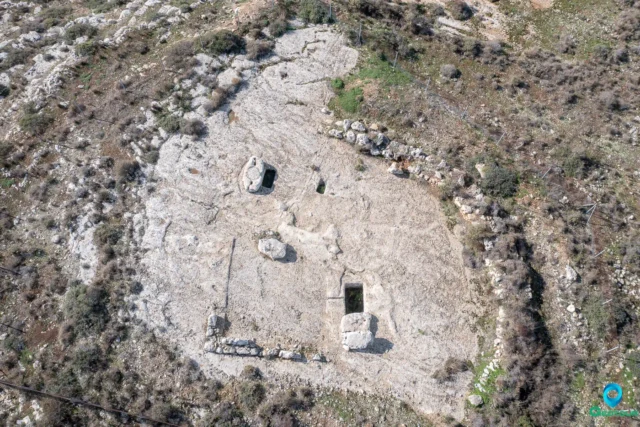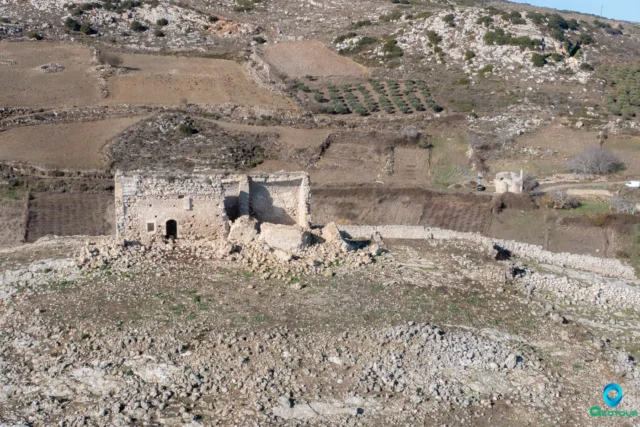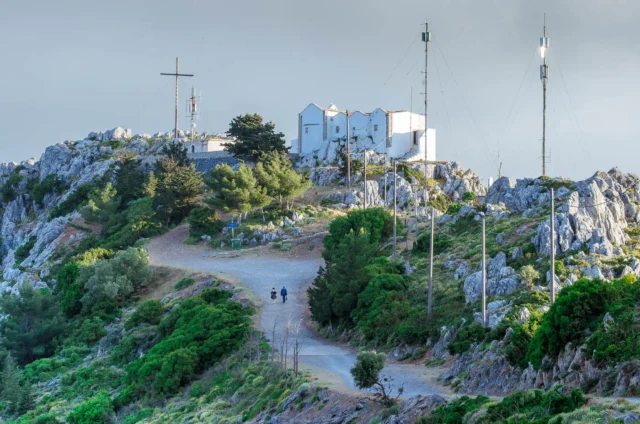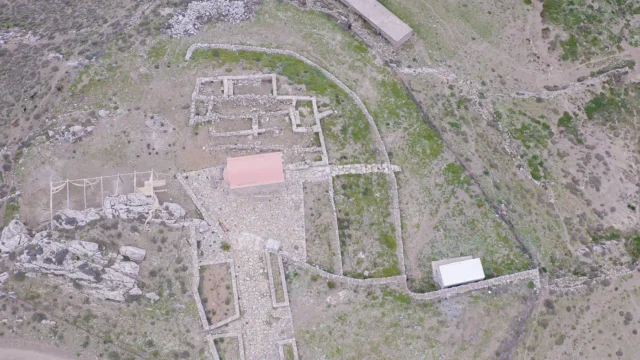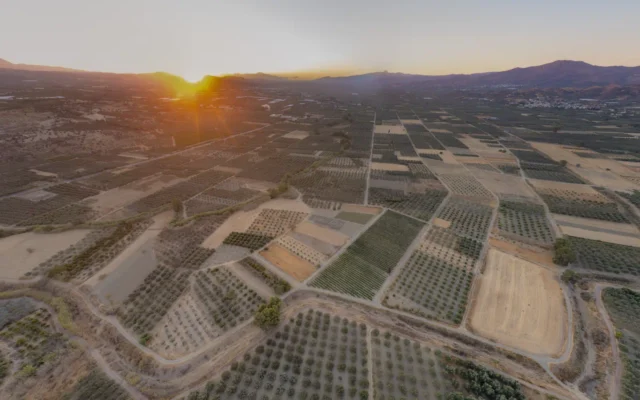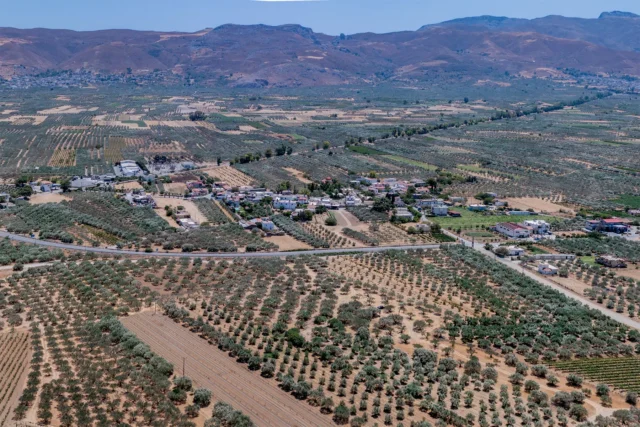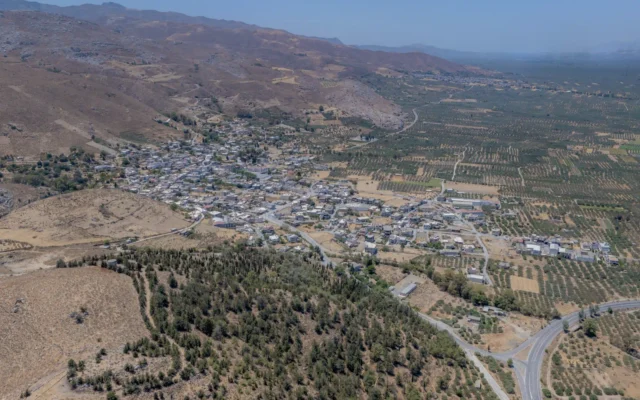46
listings found
Categories
Active filters:
Agios Pavlos Monastery near Paranymfoi
The Agios Pavlos Monastery is a Venetian-era ruin near Paranymfoi, Crete. Located in the Asterousia Mountains, it once served as a hermitage and monastery. The site features a single-aisled basilica church with traces of frescoes, a carved doorway, and ruins of monks' cells. The monastery, linked to the scholar Iosif Filagris, flourished during the Venetian period but was abandoned in the 20th century. The surrounding area shows signs of inhabitation since antiquity, including possible evidence of an ancient sanctuary. The monastery is accessible by a dirt road from Paranymfoi and is situated above the Porofarago gorge, near the hiking trail to Tries Ekklisies.
Treis Ekklisies, Archanes – Asterousia
Treis Ekklisies (Three Churches) is a small coastal settlement located 64 km south of Heraklion, in the Asterousia Mountains in Crete. The village is named after the three churches of […]
Amigdalos, Archanes – Asterousia
Amigdalos (Αμύγδαλος) is a small mountainous village in the Municipality of Archanes-Asterousia in the Heraklion Regional Unit, Crete, Greece. It is located at an altitude of 595 meters, approximately 50 km south of Heraklion and 37 km south of Epano Archanes. The village was first officially recognized as a settlement in 1925. The name "Amigdalos" means "almond tree" in Greek, likely named after the abundance of wild almond trees in the surrounding region. Amigdalos has experienced a steady population decline throughout the 20th and 21st centuries.
Agioi Apostoloi Church (Holy Apostles), Alagni
Located on Tholoi hill near Alagni, this is a 15th-16th century double-aisled Byzantine church dedicated to Apostles Peter and Paul. It features the Venetian Cornaro family coat of arms and two arcosolia (arched tombs), one externally dated to 1614. Situated near the 16th-17th century Tholoi fortress, it was part of the local defense network. Damaged in the 2021 Arkalochori earthquake, the site, owned by the Monastery of Sinai, is now abandoned and neglected.
The Necropolis of Phourni
The Phourni necropolis, near Archanes, Crete, is a significant Minoan burial site used from the Early Minoan II (EM II) to the Late Minoan IIIC (LM IIIC) periods. It features a variety of tomb types, including tholos tombs, rectangular tombs, and composite tombs, reflecting the evolution of Minoan funerary architecture and burial practices over time. Tholos tombs are beehive-shaped structures used for collective burials, while rectangular tombs resemble houses, suggesting a symbolic connection between the house of the living and the house of the dead. Composite tombs combine elements of both tholos and rectangular tomb architecture.
The necropolis has yielded a wealth of grave goods, including pottery, stone vases, metal objects, jewelry, and figurines, providing insights into the social structures and religious beliefs of the Minoans. The variety of tomb types and grave goods reflects the prosperity and social complexity of the Archanes valley. The architectural features and artistic motifs found at Phourni resonate with those found at Knossos, indicating cultural homogeneity and interaction between these two important centers. The religious beliefs of the Minoans are also reflected in the finds at Phourni, with religious symbols and ritual objects suggesting a belief in an afterlife and elaborate burial rituals.
The Phourni necropolis is the richest burial site in Crete and provides a unique glimpse into the burial practices, social structures, and religious beliefs of the Minoan civilization.
Rouma abandoned village near Alagni
Rouma, a deserted village east of Alagni in Crete, takes its name from the Cretan word for "river stream." The village, formerly abundant in oak and pine trees, was abandoned after a plague outbreak. Survivors relocated to Alagni. Despite its abandonment, Rouma is remembered for the church of Panagia tou Roumatou (Virgin Mary of Rouma), a landmark that remains historically and religiously significant. A 1630 census recognized Rouma as a separate village. The restored church of Panagia tou Roumatou is a reminder of Rouma's past, with excavated sacred vessels further highlighting its history.
Karaoula Wine Press near Alagni
A 14th-century, likely pre-Venetian, wine press near Alagni, Crete, at an altitude of 520 meters. The facility illustrates a traditional two-phase winemaking process. Grapes were first crushed by foot in a large press (5.5m×6m) lined with kourasani, with the must collected in an underground tank. The remaining pomace was then pressed using a Galeagra. The stone base of this second press and collection receptacles survive, offering insight into Cretan viticulture and land use.
Tholoi Fortress near Alagni
The Tholoi Fortress, near Alagni, Crete, dates to the 16th-17th century, reflecting Venetian and Ottoman periods. Situated on a hilltop, it served as a strategic point for surveillance and defense. Its design shows Venetian villa influences, with local stone construction. The fortress, now in ruins, experienced damage, including from the 2021 Arkalochori earthquake, but the outer wall remains. Nearby, the 15th-16th century Church of Agioi Apostoloi, bearing the Corner family crest, suggests a connection to the fortress, possibly as a spiritual center. The fortress, with dimensions of 15 by 9 meters, played a role in Venetian-Ottoman conflicts and potentially as a Turkish "koules" during the 1866-1869 Cretan Revolution.
The Palm Forest of Agios Nikitas
The palm forest of Agios Nikitas in Crete is the only place on the island where the Cretan palm grows at a distance from the sea.
Giouchtas mountain
Giouchtas Mountain, a prominent 811-meter peak south of Heraklion, Crete, features significant Minoan peak sanctuaries, including Psili Korfi and Anemospilia, dating to the 2nd millennium BCE. Anemospilia's findings suggest possible human sacrifice. Associated with Zeus, it hosts the Afendi Christos church (1443). The mountain supports diverse flora (360+ species) and fauna (150+ bird species, including griffon vultures), within maquis and phrygana landscapes, and reforestation areas. Part of the Natura 2000 network, it faces pressures from urbanization and tourism. Hiking trails lead to viewpoints and historical sites, offering insights into Minoan civilization and natural biodiversity.
Castel Bonifacio
Castel Bonifacio, or Epano Kasteli, in Crete, is a ruined fortress with Venetian and possibly Byzantine roots. Built by Enrico Pescatore, it served as a key Venetian stronghold, withstanding revolts like the Skordiles-Melissenos in 1230. Its architecture features fortified walls, square towers, and a central cistern. The site includes a ruined church and remnants of other buildings, reflecting its military and community functions. The fortress's decline began in the late Byzantine period, and the village of Tsifout Kasteli grew at its base. Archaeological research continues to uncover its layered history, highlighting its strategic role and architectural evolution.
The Monastery of Agios Georgios Epanosifis
Agios Georgios Epanosifis Monastery: A historic monastery near Heraklion, Crete. A monastery with rich history and spiritual significance.
Messara plain
The largest plain in Crete is situated in the south of Heraklion, between the Psiloritis and Asterousia mountains, with a 55 km coastline on the Libyan Sea. Its fertile land, irrigated by the Geropotamos River, is ideal for cultivating olives and grapes. A center of civilization since the Neolithic period, it contains significant archaeological sites, including the Minoan palace of Phaistos, the royal villa of Agia Triada, and the port of Kommos. Gortyn later became the Roman capital of Crete.
Protoria, Archanes – Asterousia
Protoria is a settlement located in the Heraklion regional unit on the island of Crete, Greece. It belongs to the Municipality of Archanes - Asterousia and is 16.4 kilometers away from the town Arkalochori and 3.6 kilometers away from Pyrgos
Plakiotissa, Archanes – Asterousia
Plakiotissa is a settlement located in the Heraklion regional unit on the island of Crete, Greece. It belongs to the Municipality of Archanes - Asterousia
Alagni, Archanes – Asterousia
Alagni, a village 25 kilometers from Heraklion, Crete, has a history rooted in the Minoan civilization. The village's name is believed to be derived from the nymph Alagonia, and ruins of a temple dedicated to her are said to be found on Tholi hill. Alagni is near the Minoan palace of Galatas, built around 1700-1600 BC. The village itself is home to a Minoan farmhouse and appears in historical records as early as 1583.
Alagni has several notable churches: Agios Vlassis, Sotira, Agios Georgios, Panagia, Panagia of Rouma, and Agioi Apostoloi. The latter, built in the 15th-16th century, bears the emblem of the Venetian Cornaro family.
Other significant landmarks include the deserted settlement of Rouma and Koursamos, where a cluster of winepresses dating back to the 16th-17th centuries exists. The Tholi Fortress, a small fortress from the late Venetian period (16th-17th century), is located on a hilltop west of Alagni.
The village's economy has traditionally centered around agriculture, particularly the cultivation of grapes and olives for wine and oil production.
Kounavoi, Archanes – Asterousia
Kounavoi is a settlement located in the Heraklion regional unit on the island of Crete, Greece. It belongs to the Municipality of Archanes - Asterousia
Pyrgos, Archanes – Asterousia
Pyrgos is a settlement located in the Heraklion regional unit on the island of Crete, Greece. It belongs to the Municipality of Archanes - Asterousia



